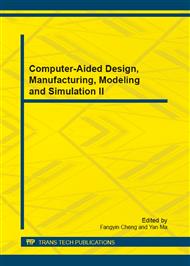p.754
p.759
p.765
p.772
p.777
p.782
p.786
p.790
p.797
Improved Fuselage Design for Crashworthiness
Abstract:
The principles of fuselage design for crashworthiness are analyzed based on investigating the theory of energy and momentum to the impact of an aircraft’s crash on occupants in order to increase the chance of survival for occupants. It indicates that minimizing the amount of bumped soil leads to the reduction of resistance from soil to the aircraft while crashing along the y-axis direction (horizontal) and increasing the energy absorption improves the crashworthiness of the aircraft along the z-axis direction (vertical). The deformation of the aircraft cabin and the acceleration of the occupants during a crash are the two most important factors to consider for crashworthiness. The improved fuselage design for crashworthiness is proposed for both y-axis and z-axis directions. Suggestions for the crashworthy fuselage design are given in order to obtain high performance of crashworthiness design, which is meaningful to the future design for fuselage’s crashworthiness.
Info:
Periodical:
Pages:
777-781
Citation:
Online since:
December 2012
Authors:
Keywords:
Price:
Сopyright:
© 2013 Trans Tech Publications Ltd. All Rights Reserved
Share:
Citation:


